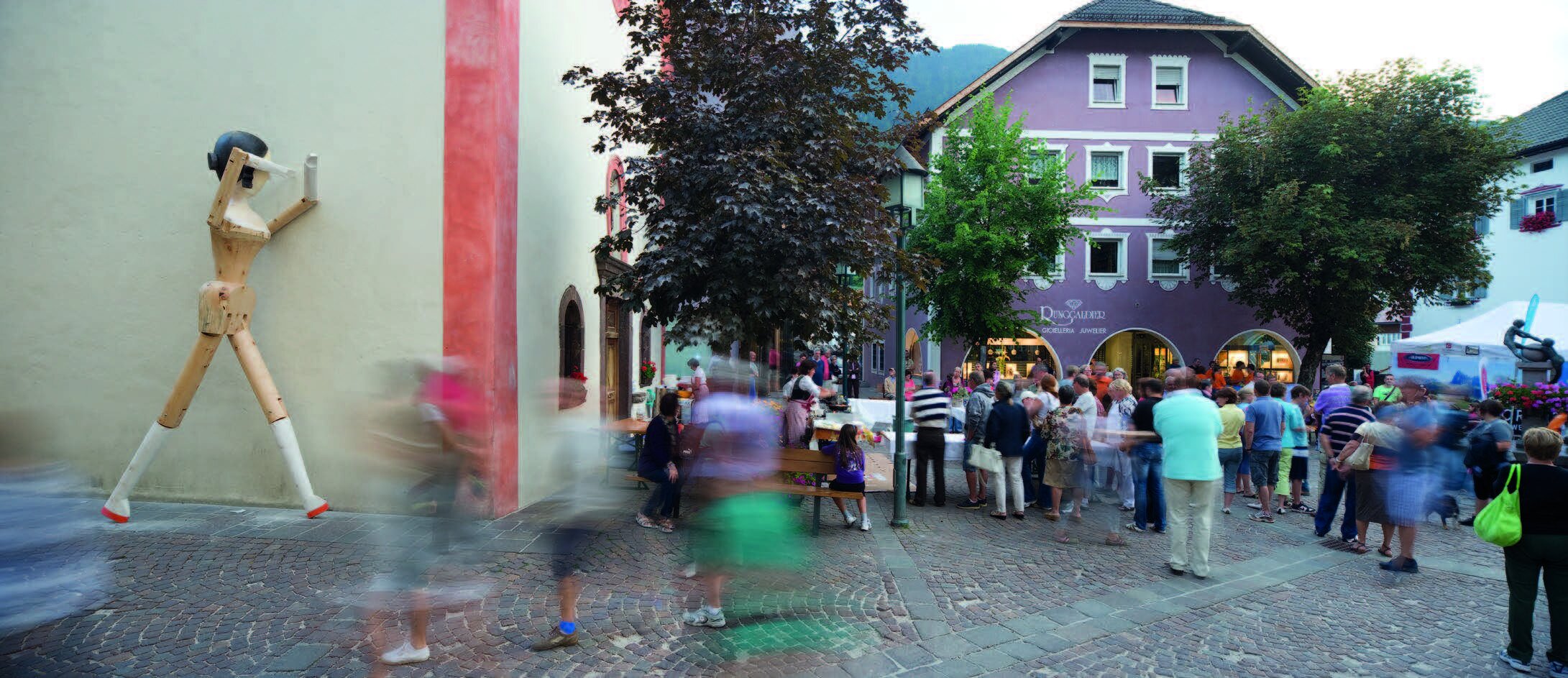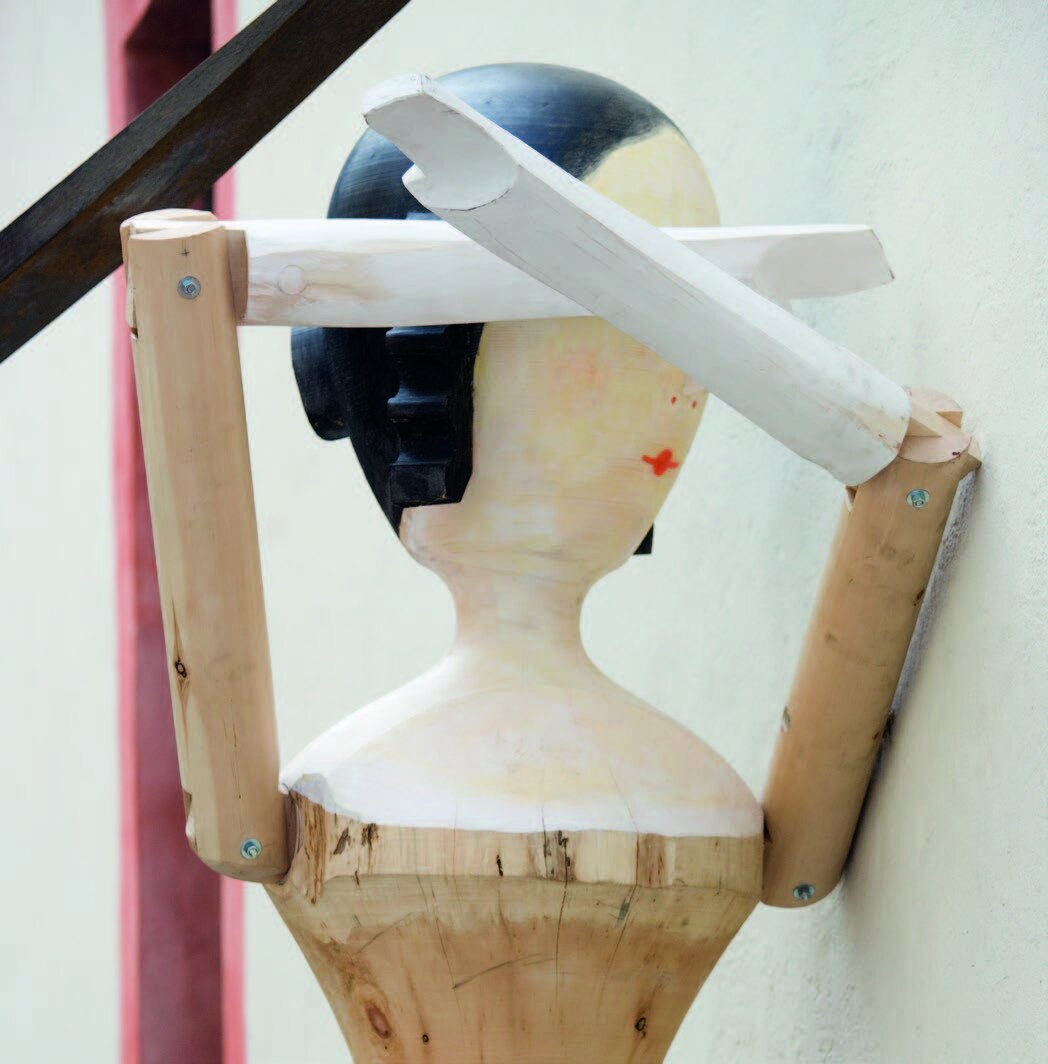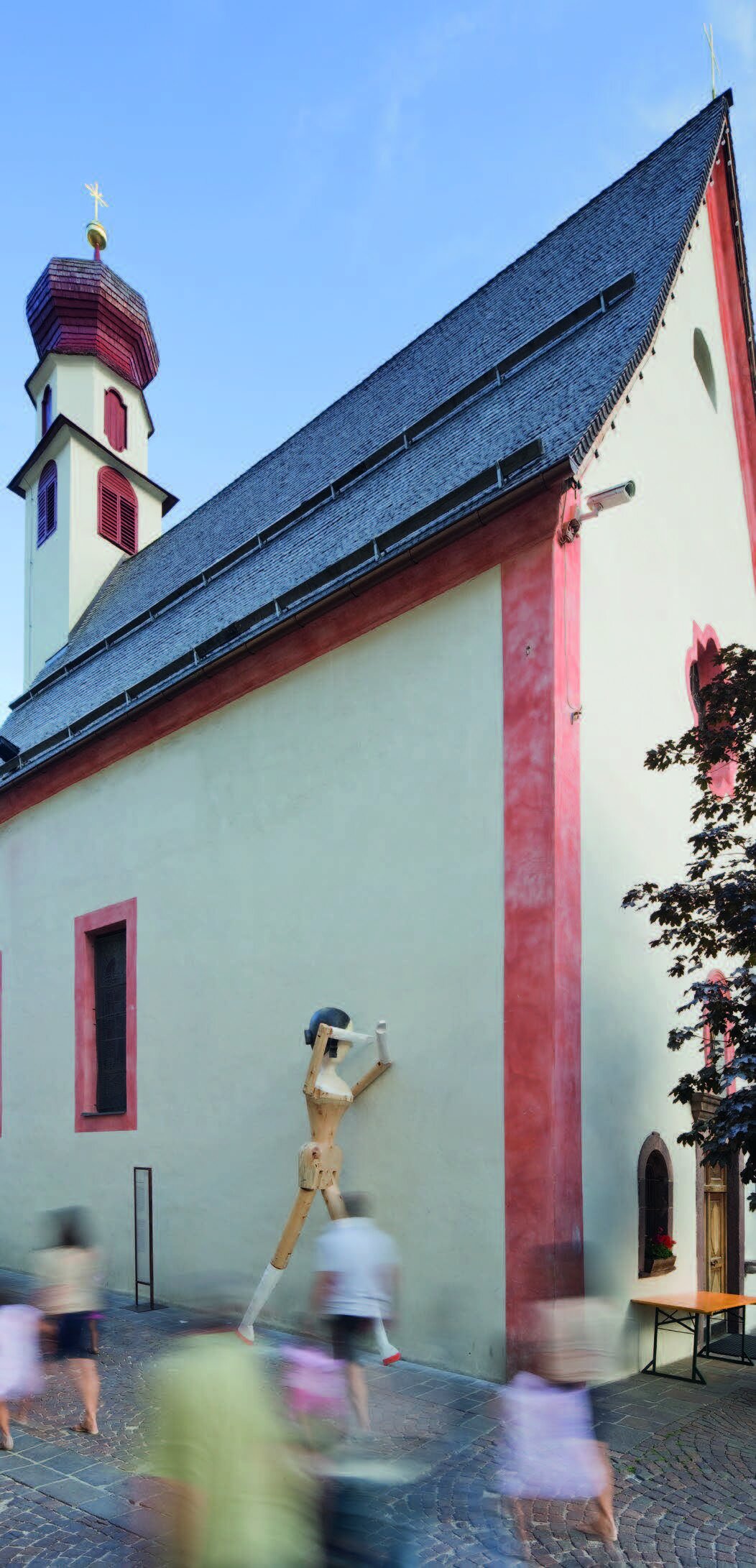
Arnold Holzknecht
*1960, Italy
lives and works in Val Gardena, Italy
EN
"Where am I?" - With the monumental-sized sculpture "Toys from the Val Gardena", Arnold Holzknecht ventures into a representational genre that has a long tradition in the Ladin region. The typical doll carved in wood by the people of Val Gardena from the mid-eighteenth century onwards is taken up again by the sculptor and depicted in giant size, retaining both the realistic features and the movable joints. For the artist's concept, it is not important to invent new figures, but to represent existing forms in a different way. A repetition in a different way, which is supposed to be an example of the changed course of things.
The peculiarity of this work lies in the fact that it takes up again the classic form of the Nipp figure on a pedestal, sitting or standing on a base. In this case, it is placed directly on the floor and anchored to the side wall of St. Anthony's Church. Her upper body is turned so that she covers her face with her raised arm. The title of the work, "Where am I?", is loaded with an archaic contemplative value filled with references: although the lineage is clear in terms of local tradition, the future reserved for this toy is far from self-evident, even in the face of competition from industrial processes and the mass production of objects. The monumentality of this enormously large wooden doll seems to demand its individual and independent place in the history of sculpture.
IT
“Dove sono?” - Con la scultura in scala monumentale del giocattolo della Val Gardena, Arnold Holzknecht si cimenta in un genere figurativo che ha lunga tradizione nella regione ladina. La tipica bambola intagliata in legno, prodotta dai gardenesi a partire dalla metà del Settecento, viene ripresa e ingigantita dallo scultore mantenendone intatti sia i tratti realistici sia le articolazioni snodate. Nella concezione dell’artista non è infatti importante inventare figure nuove ma riproporre le forme esistenti in modo diverso. Una ripetizione differente che sia esemplificativa di un mutato corso delle cose.
La particolarità di quest’opera è di aver ripreso la tipologia classica della figura da soprammobile su piedistallo, seduta o appoggiata su una base, che qui viene direttamente posta a terra, ancorata alla parete laterale della Chiesa di S. Antonio e ruotata sul busto in modo da farle coprire il volto con il braccio innalzato. Il titolo stesso dell’opera „Dove sono?“ si carica di un livello contemplativo arcaico e denso di rimandi: se è chiara la linea di discendenza rispetto alla tradizione locale, non così ovvio è l’avvenire riservato a questo giocattolo anche rispetto alla concorrenza dei processi industriali e di produzione seriale degli oggetti. La monumentalità dell’enorme bambola in legno sembra reclamare un suo posto individuale e autonomo nella storia della statuaria.
DE
“Wo bin ich?” - Mit der Skulptur in monumentaler Größe „Spielzeug aus dem Grödnertal” wagt Arnold Holzknecht sich an ein dar-stellendes Genre heran, das in der ladinischen Region eine lange Tradition hat. Die typische, von den Grödnern ab Mitte des achtzehnten Jahrhunderts in Holz geschnitzte Puppe wird vom Bildhauer wieder aufgenommen und riesengroß dargestellt, wobei sowohl die realistischen Züge als auch die beweglichen Gelenke beibehalten wurden. Für das Konzept des Künstlers ist es nicht wichtig, neue Figuren zu erfinden, sondern existierende Formen auf andere Art und Weise neu darzubieten. Eine Wiederholung auf andersartige Weise, die ein Beispiel für den veränderten Lauf der Dinge darstellen soll.
Die Besonderheit dieses Werks liegt darin, hiermit die klassische Art der Nippfigur auf Sockel, die auf einem Untersatz sitzt oder steht, wieder aufgenommen zu haben. In diesem Falle wird sie direkt auf den Boden gestellt und an der Seitenwand der St. Antonius-Kirche verankert. Ihr Oberkörper ist gedreht, so dass sie ihr Gesicht mit dem erhobenen Arm verdeckt. Der Titel des Werks „Wo bin ich?“ belädt sich mit einem archaischen, von Verweisen angefülltem kontemplativen Wert: Wenngleich die Abstammungslinie in Bezug auf die örtliche Tradition klar ist, so ist die diesem Spielzeug vorbehaltene Zukunft auch im Hinblick auf die Konkurrenz der industriellen Verfahren und der Serienproduktion von Gegenständen längst nicht so selbstverständlich. Die Monumentalität dieser enorm großen Holzpuppe scheint ihren individuellen und eigenständigen Platz in der Geschichte der Bildhauerkunst zu fordern.


